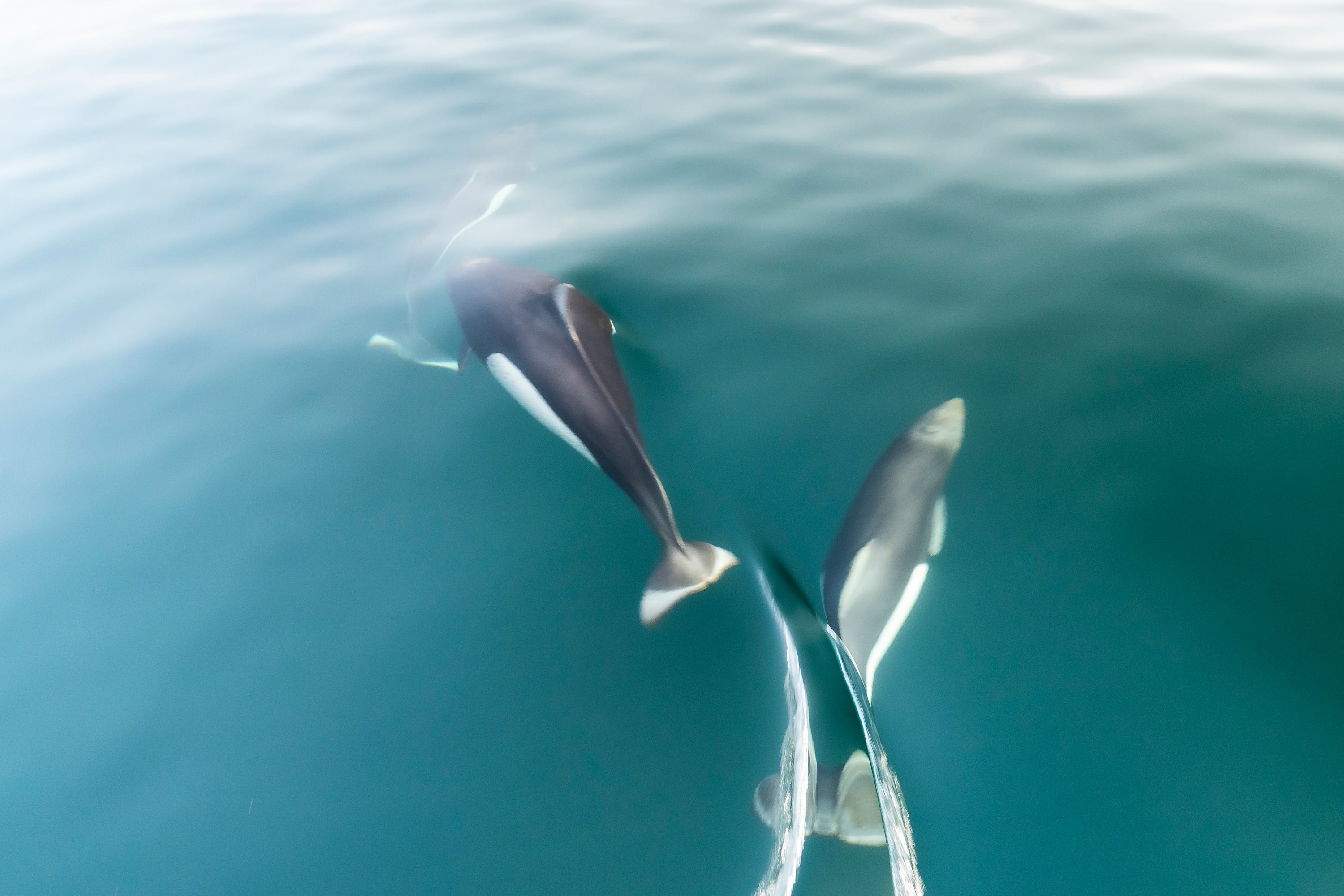
A Journal Entry of a Wildlife Photographer: Broughton Archipelago Pacific White-Sided Dolphins
For me, this career is all about the pursuit.
I moved to Vancouver Island from Ontario back in 2017 to work with iconic National Geographic photographers Paul Nicklen and Cristina Mittermeier. I had landed an internship to work at their ocean conservation-based non-profit—SeaLegacy—and quickly fell in love with the ocean. It didn't take long to grasp a better understanding that being a wildlife photographer and filmmaker wasn't as glamorous as it seemed and required immense commitment. But, I am stubborn and was up for the challenge.

Fast forward to today, I am currently hunkered down due to weather in Port McNeill, one of the most northern communities on Vancouver Island. It's the first bad storm of the year with wind gusts of over 100 kilometers per hour; ferries are canceled, and I don't even have power right now! For the past month, I have been documenting—or rather attempting to document—Pacific white-sided dolphins for Oceans Initiative, a marine-based non-profit. The fieldwork is primarily focused in British Columbia's stunning Broughton Archipelago, tracking dolphins throughout the many channels and inlets. Home to dolphins and a sanctuary for a plethora of marine (and some land-dwelling) wildlife—including several species of whales, orca, porpoises, salmon, birds, and even bears in the estuaries and foraging in the intertidal zones—summers in the Broughton Archipelago are as nice as they come; with warm sun and calm seas. However, that almost instantly changes when October hits and near-daily rain settles in. That's where I find myself now, with weather hindering the second leg of this project.

We've been getting out every opportunity possible as the weather hasn't impacted the animals nearly as much as it has affected us, staying true to their playful antics when they gather. Pacific white-sided dolphins are social mammals, forming pods of up to several hundred individuals and are known to be very playful. We often don't see anything at all, but on the occasional day, we strike large-pod gold.

As Oceans Initiative is building a photo bank of dorsal fin images to identify dolphins over several years to track longevity, health, pod size and group interaction and dynamics, which is where my work is primarily focused: photo identification. When I'm with the dolphins, I'm always focused on getting as many identification shots as possible for the research, keeping a specific eye out for the ones leaping out of the water. Pacific white-sided dolphins can jump over 12-feet out of the water and frequently play with one another, chasing and breaching in sporadic ways. Those are the moments I'm personally interested in and what I want to capture with my camera.

It's much more challenging to work on water compared to land for photography for many reasons. Namely, because the motion of the ocean is a bitch. Tripods are rendered useless due to the roll of the boat. Moving horizontally and vertically simultaneously makes looking through a viewfinder difficult (sometimes impossible), and you can quickly lose your subjects. Working from a ship isn't a cakewalk either. You can only move around so far on the deck, need to be shooting specific camera settings to compensate for motion blur, are restricted to move only where the boat can move, weather can change almost instantly...the list goes on.
With that said, I crave a heightened challenge; it makes the work that much more rewarding when images do turn out.

With only a couple of days remaining, I am proud of the work we've done so far and have mentally accepted what mother nature has provided with the weather. I've taken over ten thousand photo identification shots (I'm glad I'm not the one going through them!) and have spent countless hours with dolphins and the accompanying marine life. Every time the boat cruises through a glacial inlet with sparkling blue water and barren rock faces on the surrounding cliffs, I develop a more profound respect for this region and understand why so many species call this place home. I have immense gratitude to these animals for providing me with the opportunities to spend time with them and photograph them in their element.
Words and images by Ryan Tidman
See more from Ryan HERE